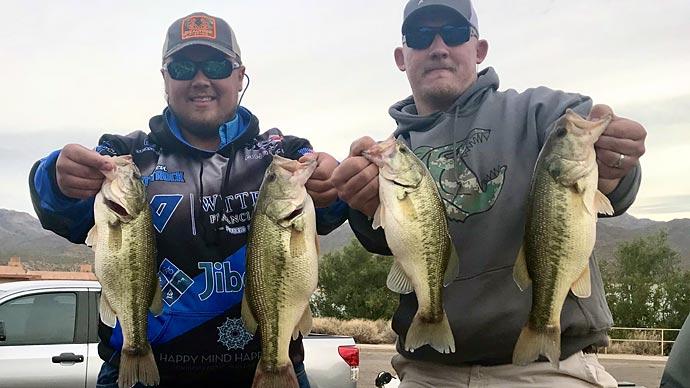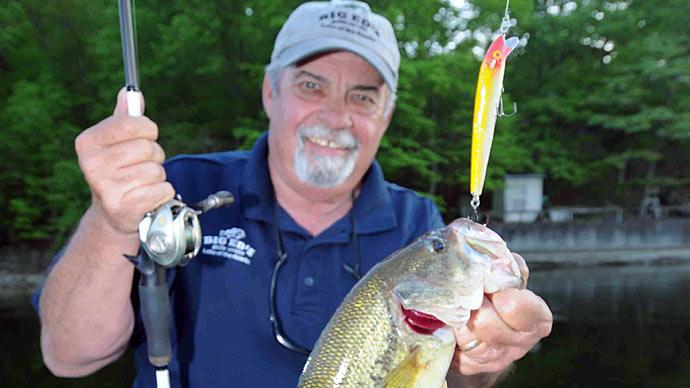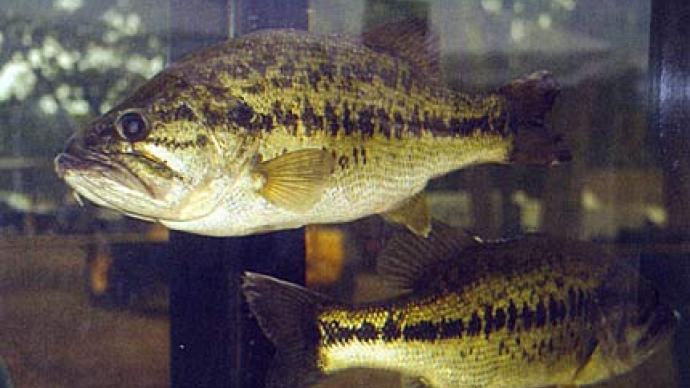
For many pond owners, their chief management challenge is putting weight on skinny gamefish. This is especially true of aging and/or clear ponds where the largemouth is the marquee species.
By the time your bass reach 12 inches in length, they should weigh an ounce or two shy of 1 pound, according to the average standard posted by the American Fisheries Society.
If your fish fail to meet these general guidelines, or they're all head and no meat along the backbone, it's time to examine the balance of fish populations in your pond.
For a short solution to a long-standing problem, reduce the number of predators in your pond -- or give those bass or trout more to eat. Catch-and-release is fine for public reservoirs but in small ponds, it can be a detriment to growth-rates.
There can be issues related to water quality, most notably when a pond is infested with aquatic vegetation and the fish can not find enough minnows and other forage to sustain their growth.
After an on-site evaluation of a 4-acre pond with skinny bass in Central Texas, one member of the Pond Boss Field Advisory Staff offered these recommendations:
- Conduct a new electo-shocking survey. It will give you an underwater snapshot of how your fish populations look that day. The survey costs $750-$1,000. It provides a wealth of useful data, including (a.) the total standing crop of fish; (b.) the relative density of the species; (c.) age-growth profiles to see if the gamefish have enough forage to eat; (d.) presence of disease.
- Survey data indicates your bass need more food. Consider diversifying the food chain by stocking coppernose bluegill, a super-charged sunfish species-that spawns prolifically in small ponds like this site. This trait helps supply the gamefish (bass) with extra forage and the coppernose reaches weights exceeding 1.5 pounds, so it becomes another targeted sportfish for flyrodders and other light-tackle enthusiasts.
- Build a small pier or boat dock. This provides easy access for the boater. It also creates a good spot to set an automatic fish feeder.
- When you add high protein to the fishes' diets, your sunfish will grow larger and expend more of their energy spawning - which triggers growth in your bass - instead of chasing food. Supplementary feeding is cost-effective. If you feed 8 pounds of pellets a day, it comes to slightly more than one 50-pound sack a week. At $15 a bag during the 30 weeks of a 200-day growing season, you would spend approximately $450 a year on feed. That 1,500 pounds of feed would add 750 pounds of flesh to your fish. A bargain, for about $2.20 a day.
- The lake is deep enough to form a thermocline or layer cake effect in the summer. Water below about eight feet deep will be void of oxygen. You might well need an aerator to keep the water oxygenated during the hot months of summer and early-autumn.
- Keep catch records. Consider keeping some bass in the 10-to-14 inch range. Ask your visiting fishermen and women to jot down what species they catch, along with their length. From this, we can tell if the fish - especially the bass - are growing. If they're not, we can fix it.
| Standard weights for healthy bass | ||||||||||||||||||||||
Do the largemouth in your pond measure up? Here are the standard body weights for bass, as posted by the American Fisheries Society. The weights are intended to serve as optimum goals. In practice, standard weights may vary by region, according to length of growing season, elevation, water quality and other limiting factors.
|
Source: American Fisheries Society
Reprinted with permission from Pond Boss Magazine



